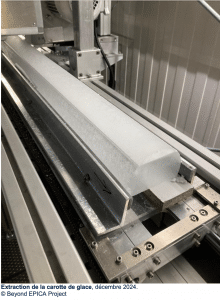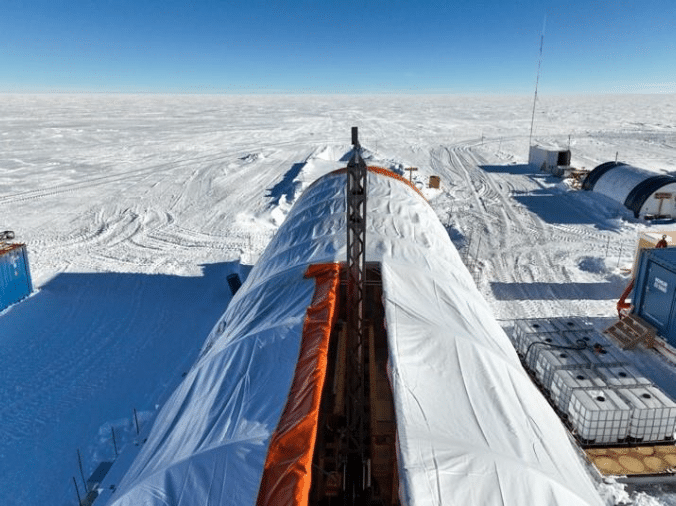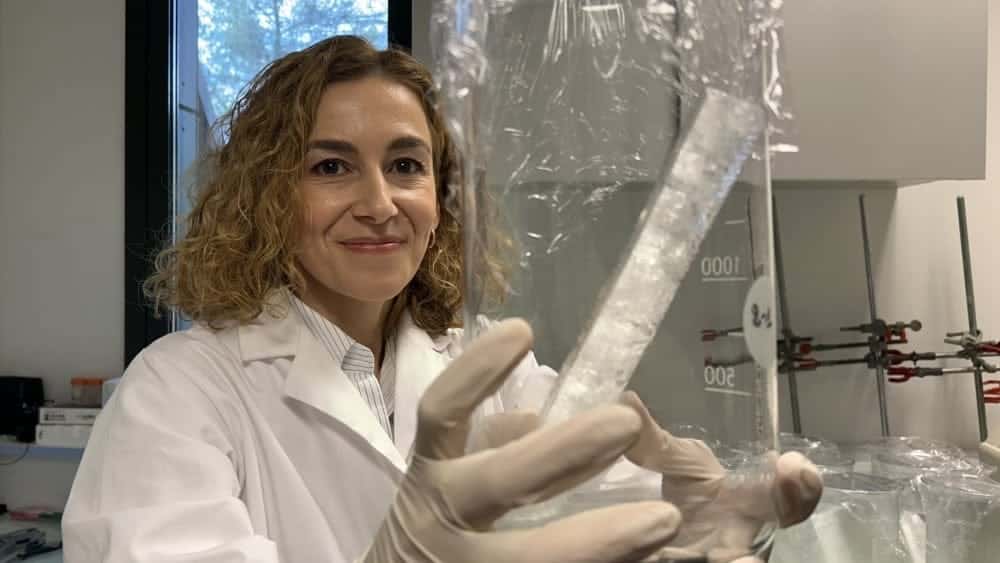An international consortium of scientists from twelve institutions, including the French National Centre for Scientific Research (CNRS) and the French Polar Institute, has succeeded in reaching ice dating back more than 1.2 million years by drilling a 2800-metre-long core into the Antarctic ice cap. The samples collected will make it possible, for the first time, to reconstruct important parameters of the Earth's climate and the composition of its atmosphere more than 800,000 years into the past. This historic achievement is the culmination of the fourth field campaign for the European "Beyond EPICA - Oldest Ice" project, which aims to solve one of the mysteries of climate science: the cause of the slowdown in the rate of glaciation around a million years ago..
At the Little Dome C site in Antarctica, a research team representing twelve institutions from ten European nations1 has just achieved a major objective in climate science: it has successfully carried out a drilling campaign to reach the sub-glacial continent at a depth of 2,800 metres. According to the initial results of the analysis, this layer of ice provides a continuous climate record dating back at least 1.2 million years. This is the longest continuous climate record from ice cores, surpassing the previous record of 800,000 years held by the EPICA project following the drilling campaign carried out in 2004 at Dome C.
However, further analysis is still needed to determine whether even older ice can be exploited. Although it has lost some of its palaeoclimatic information, the samples from the deepest 200 metres are likely to contain ice dating back several million years.
Study ice at depth to go back in time
The ice extracted during this fourth campaign, which began in November 2024, has preserved a record of the Earth's climate history, providing a direct insight into atmospheric temperatures and greenhouse gas concentrations over the last 1.2 million years.
" Thanks to the isotope analysis system prepared for the field and managed by Amaëlle Landais, a CNRS researcher at the Laboratoire des sciences du climat et de l'environnement, we are able to see the succession of glacial - interglacial cycles recorded in the ice almost in real time during drilling, and thus confirm the preliminary dating. "explains Frédéric Parrenin, a CNRS researcher at the Institute of Environmental Geosciences.
Once back in Europe, the ice cores will be analysed with the aim of reconstructing the Earth's climatic history and the composition of its atmosphere over the long period up to the present day.
More specifically, these analyses should help to shed light on the reasons for the mysterious transition that occurred during the mid-Pleistocene, a period between 900,000 years and 1.2 million years ago, during which glacial cycles increased in amplitude and their period increased from 41,000 years to 100,000 years. Only polar ice can be used to reliably reconstruct CO2 concentrations, a gas that is suspected of having played a decisive role in this transition. In addition, the Earth's magnetic field reversed and collapsed several times during this period, and scientists hope that these events will have been recorded in the ice.
Scientists also hope to be able to extract rocks from beneath the ice, analysis of which could indicate when the continent was last de-iced. This pharaonic project will come to an end in May 2026.
European collaboration
The project was funded by the European Union and supported by national funding agencies, such as the ANR in France, which funded the Towards Beyond EPICA (ToBE) project.
Frédéric Parrenin, CNRS research director at the Institut des géosciences de l'environnement (CNRS/Université Grenoble Alpes/INRAE/IRD) is coordinating the French part of "Beyond EPICA - Oldest Ice", in collaboration with project coordinator Carlo Barbante, professor at the University of Venice. From the same laboratory, Catherine Ritz, CNRS research director, coordinated the site research and Olivier Alemany, CNRS research engineer specialising in glacier drilling techniques and head of the French glacier drilling platform (F2G), took part with his team.
In France, four laboratories managed by CNRS and its partners are involved in this project alongside the French Polar Institute:
Institut des Géosciences de l'Environnement (CNRS/Université Grenoble Alpes/INRAE/IRD),
Laboratoire des Sciences du Slimat et de l'Environnement (IPSL2, CEA/CNRS/Université Versailles Saint-Quentin-en-Yvelines),
the Environmental Geosciences Research and Teaching Centre (Aix-Marseille University/CNRS/INRAE/IRD)
the Centre de Recherches Pétrographiques et Géochimiques (CNRS/Université de Lorraine)
David Renault, Scientific Director of the French Polar Institute, points out that this project required specific technical development and logistical know-how to enable the Little Dome C isolated camp to be set up and run. The camp was deployed and maintained thanks to the proximity of the Concordia station managed jointly by the French Polar Institute and ENEA3.
The organisations have integrated the running of the Beyond EPICA camp into Concordia's annual operations, which, in addition to their specific knowledge of the Antarctic environment, means they have had to rely on very substantial means of transport: planes from the Italian Mario Zucchelli Antarctic Station for people, the raid between Dumont d'Urville and Concordia to transport heavy loads, and the French and Italian ships L'Astrolabe and Laura Bassi for travel and freight, a colossal logistical challenge that has been renewed every year since December 2020.
In addition, fifteen PhD grants were funded by the European Union through the DEEPICE International Training Network, coordinated in France by Amaëlle Landais, a CNRS researcher at the Laboratoire des sciences du climat et de l'environnement, and Emilie Capron, a CNRS researcher at the Institut des géosciences de l'environnement. Three PhD students took part in this fourth drilling campaign.
Contact CEREGE
Senior lecturer AMU
Find out more:
- Project "Beyond EPICA - Oldest Ice: www.beyondepica.eu
- Photos and videos of field campaigns available on request.
- Contact: Frédéric Parrenin | T +33 6 27 86 27 82 | Researcher CNRS | frederic.parrenin@univ-grenoble-alpes.fr
- Contact: Manon Landurant | Presse CNRS | T +33 1 44 96 51 37 | manon.landurant@cnrs.fr
- Contact: Aude Sonneville | Press Polar Institute | T +33 2 98 05 65 05 | aude.sonneville@ipev.fr





